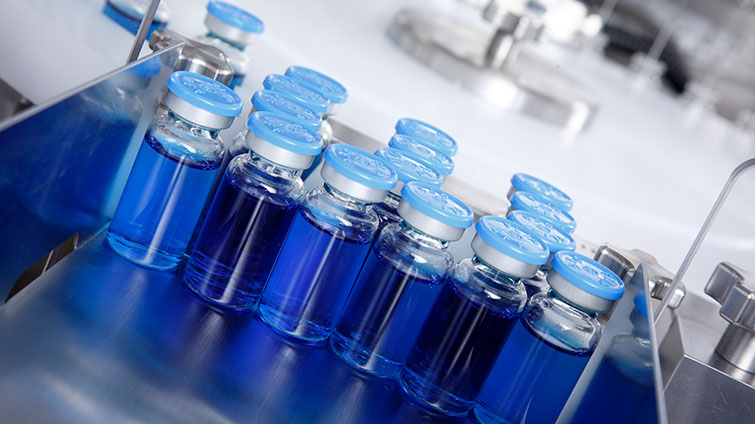Threatened pharmaceutical tariffs create uncertainty for the sector

U.S. tariffs announced on pharmaceuticals
On September 25, 2025, the U.S. Administration announced plans for a 100% tariff on all branded or patented pharmaceutical products imported into the United States, effective October 1, 2025. There is one critical exemption: companies that have already begun construction on U.S.-based manufacturing facilities will not be subject to the tariff. Days later, the administration announced a pause to these planned tariffs as they negotiate with pharmaceutical companies further.
The announcement follows a Section 232 investigation into pharmaceutical imports, citing national security concerns. The United States imported $168 billion in finished and unfinished pharma products in 2024, with the majority of these imports, $127 billion, coming from the EU.
If this tariff were to move forward at a future date, many details still need to be announced, such as whether this new 100% tariff will be layered on top of existing duties, including the 15% tariff on EU pharmaceutical imports enacted in August. The U.S. administration signaled exemptions may be made for certain popular drugs but has not specified which ones or how many.
Major drugmakers, including Eli Lilly, Johnson & Johnson, and AbbVie, have publicly stated the tariffs could disrupt supply chains, increase drug prices, and divert capital away from innovation and domestic investment. After a deal with Pfizer was struck on September 30, 2025 for a $70 billion investment in exchange for a three-year pause on these tariffs, the administration looks to make similar deals with more large companies.
As the industry adapts, expect increased demand for bonded warehousing, consolidation services, and customs advisory support. The tariffs may also accelerate the trend toward nearshoring and domestic manufacturing. As an ISO 9001:2015 and GDP certified pharmaceutical logistics provider with an extensive global network, C.H. Robinson can help pharma companies adapt their logistics strategy.
Expiring patents set to redraw supply chains
With several multi-billion-dollar, blockbuster drugs losing patent protection this year and more expiring in the next few years, the field is opening up for more affordable generics and biosimilars. The eye-catcher is the popular weight loss drug Ozempic, whose patents in Canada and China expire in 2026, with other markets to follow in subsequent years. Several Chinese companies are in the process of developing generic versions. Meanwhile, the generics race is on for a long list of widely used—and highly profitable—medications for various ailments.
Generic drugs typically cost 80–90% less than their branded counterparts, and biosimilars offer savings of 15–35%. This price drop will drive greater demand and broader distribution, especially in regions and patient populations previously limited by cost. As generics and biosimilars enter the market, supply chains will need to adapt to higher volumes and more frequent shipments. Manufacturers, distributors, and logistics providers will need to manage more SKUs, more inventory turnover, and greater geographic reach.
What to know about shipping generics safely
The growth in over the counter (OTC) pharmaceuticals and generic drugs is driving an increased need for logistics providers qualified to work with pharmaceuticals. This, combined with the rise in telemedicine and online pharmacies, has only heightened the importance of pharmaceutical shipping regulations. At the same time, there are many unique requirements for pharmaceutical shipping, including temperature control throughout the supply chain, clean and well-ventilated storage facilities, thorough documentation for legal compliance, and high security measures.
Due to the nature of the industry, pharmaceutical shippers have a small network of logistics providers to work with. Choosing a logistics provider with global reach, a large network of transportation modes, and the proper certifications is critical to ensuring safe, cost-effective operations. C.H. Robinson is an ISO 9001:2015 and GDP certified pharmaceutical logistics provider.
Latest tariff updates
- A major outstanding trade deal is the one between the United States and India. Between 40% and 50% of the generic drugs used in the United States come from India. As of late September, the India–U.S. trade deal was back in negotiations, with indications that a resolution was near. The C.H. Robinson tariff tool is updated daily, providing access to the latest rate information and enabling efficient supply chain management.
- On September 8, 2025, an updated list of exemptions to the reciprocal tariffs went into effect. Shippers are advised to determine if their products were added or subtracted to this new list.
- In September, the Secretary of Commerce announced new Section 232 investigations, including one seeking to “determine the effects on the national security of imports of personal protective equipment (PPE), medical consumables, and medical equipment including devices.” Healthcare companies are advised to monitor the progress of this investigation, as the subjects of this investigation include a wide variety of products used in healthcare settings, patient diagnosis, treatment, and prevention of disease, as well as equipment, tools, and machines used to support patient care. Section 232 investigations do not require a public hearing, and in the past, investigations have resulted in tariffs in as little as 10–12 weeks.
- The Supreme Court has agreed to hear the U.S. administration’s appeal to a recent ruling that the government does not have the authority to impose tariffs under the International Emergency Economic Powers Act (IEEPA), which was used to establish the reciprocal tariffs on imports for most countries outside of China, Mexico, and Canada. Enforcement is delayed until October 14, 2025. If the tariffs are ultimately deemed invalid, there is uncertainty around if and how they will be reimbursed. Supreme Court briefings will likely conclude in late October, with hearings expected early November and a decision expected in late November or early December.
 Download slides
Download slides